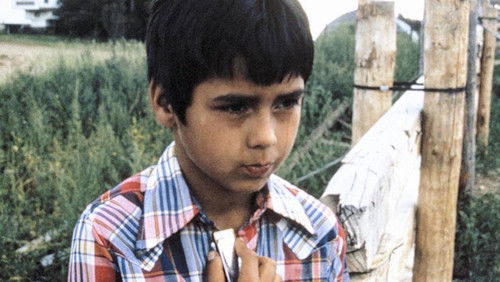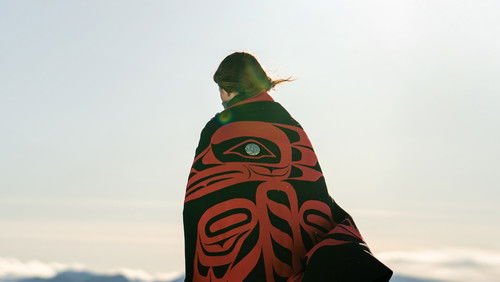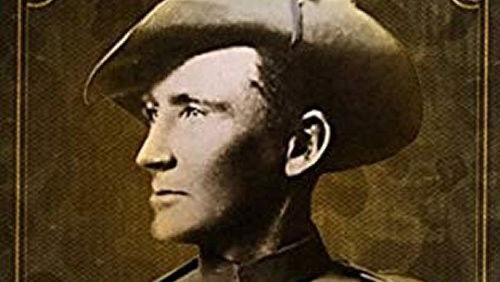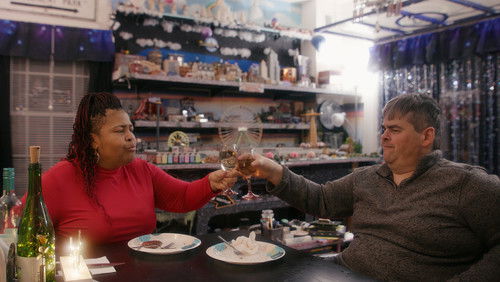Predstavlenie (2008)
10KPredstavlenie: Directed by Sergey Loznitsa. Excerpts from newsreels, propaganda films, TV shows and feature films that present a evocative portrait of Soviet life during the 1950s and the 1960s.
“I watched u0026quot;Revueu0026quot; at my local theateru0026#39;s u0026quot;screening roomu0026quot;. All the black-and-white archival footage of the old USSR was fun to see. I saw firsthand seas of Young Pioneer scarves, lots of tractors and other farm equipment, flooded residential areas, large apartment blocks, reinforced concrete and modular construction techniques, huge factory chimneys belching smoke, a great emphasis on manufacturing steel, exercises in u0026quot;tamingu0026quot; nature, and much more.u003cbr/u003eu003cbr/u003eYou can learn more looking at these pictures in a couple of hours than you would spending hours reading lots of political and social histories; u0026quot;Revueu0026quot; substantiates that old trope u0026quot;a picture is worth a thousand wordsu0026quot;. These clips are selected, edited, and sequenced; so you spend a short enjoyable time absorbing some history without being subject to that dusty patina of a professional historian exploring every scrap of archive footage. The hands of the original photographer and of the film composer are predictable and not ponderous, opening the possibility of gleaning a first hand view of life in the old USSR.u003cbr/u003eu003cbr/u003eThe emphasis on manufacturing steel was reminiscent of things Iu0026#39;ve heard about Maou0026#39;s China. These events were before the u0026quot;age of OSHAu0026quot;. Efforts to tame nature didnu0026#39;t appear entirely successful even at the time, and were consistent with my impressions of environmental catastrophe across the USSR decades later. All that mechanized equipment must have used an awful lot of oil. And the out-sized farm equipment -which would have dwarfed anything except large collective farms- seemed to be new (almost unfamiliar) to the farmers. Given how much equipment (boats, rafts, floating walkways, etc.) was readily at hand and how the people went on with their daily routines, the flood must have recurred in most years.u003cbr/u003eu003cbr/u003eThereu0026#39;s no u0026quot;narratoru0026quot; nor u0026quot;voice overu0026quot;, so whatever points the filmmaker wants to make either have to be very unsubtle or have to be repeated many times. One unsubtle comparison was of u0026quot;newu0026quot; and u0026quot;oldu0026quot; ways of germinating seed. The u0026quot;newu0026quot; method used the trappings of a scientific laboratory: notebooks, white coats, standardized glassware, measured ingredients, and so forth. The u0026quot;oldu0026quot; method was nothing more than wrapping up the seed and burying it in the snow in the side yard. Clearly the u0026quot;oldu0026quot; method got equal or better results for a lot less effort. Lots of sequences seemed to poke fun at u0026quot;superfluous bureaucracyu0026quot;, but itu0026#39;s not clear to me whether this is symptomatic of the just the old USSR or of governments more generally in that period.u003cbr/u003eu003cbr/u003eThe construction techniques with reinforced concrete and modular construction led to apartments with small rooms and concrete walls. To enable each module to be separately picked up by a crane, every module had to be very sturdy; each module was small, included all four walls, and had only little window openings. The result was those u0026quot;heavyu0026quot; and u0026quot;repetetiveu0026quot; buildings that we denigrate as u0026quot;Soviet Architectureu0026quot;. The style that had previously been a mystery to me suddenly not only made sense but seemed inevitable.u003cbr/u003eu003cbr/u003eThere were bits of u0026quot;inspirationalu0026quot; art (including what we might now call the u0026quot;heroic workeru0026quot;). Statues and mannequins of Lenin (and some of Marx) were ubiquitous. Those displays were so obviously u0026quot;propagandau0026quot;, I couldnu0026#39;t see them as u0026quot;artu0026quot; even though they may have been intended that way. Some of it seemed to me very similar to the US governmentu0026#39;s efforts to garner support for WWII, such as those u0026quot;Uncle Sam Wants YOUu0026quot; posters, or cartoons showing Hitler as the big bad wolf and the little pigu0026#39;s brick house sprouting huge cannons. And having just looked through a collection of posters, pamphlets, and photographs from the depression-era CCC (Civilian Conservation Corp) in the US, the u0026quot;heroic steel workeru0026quot; seemed less like the product of a warped imagination and more like a copy of the US a decade earlier.u003cbr/u003eu003cbr/u003eAll those tractors, seed drills, ice drills, caterpillars, steel mills, refineries, earth movers, and so forth seemed to be based on technologies that sprang fully formed from something other than local roots. It was obvious they hadnu0026#39;t grown up from anything that was there before. These pictures supported claims that much of the USSR used technology imported from the US.u003cbr/u003eu003cbr/u003eMany of the performance sequences were of simple singing and dancing. Maybe I was supposed to see them as insipid and overly political, but I didnu0026#39;t see them that way at all. Rather, I saw them in the context of the recent Uighur unrest in the Xinjiang region of China. (Chinau0026#39;s social policies regarding ethnic minorities were simply copied from the USSR a long time ago.) I saw most of the performance sequences as attempts to base art on folk traditions, preserving and building on what was there previously. These sequences werenu0026#39;t a whole lot different than the photos in the old u0026quot;Soviet Lifeu0026quot; magazine. Some were pathetic and precious, but that seemed related to social policy rather than political organization. And looking closely at the faces -especially in the chorus sequences- a few stood out as being very different from the rest. These must have been children of u0026quot;nativeu0026quot; ethnic groups that had chosen to assimilate as much as possible. The old USSR policy regarding ethnic minorities was definitely more enlightened than similar policies in the West at the time. I couldnu0026#39;t though judge from u0026quot;Revueu0026quot; whether or not the policy actually worked all that well even back then, because I could only see the positive exceptions. I guessed in any case the policy wouldnu0026#39;t have kept working in the USSR fifty years later …but the update was superseded by other events.”









